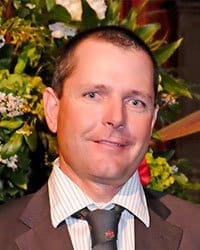In response to the attractive grid premiums and relatively stable year-rounding pricing on offer (see this morning’s separate story), there has been a string of substantial northern beef producers converting to Certified Organic production in the past year or so.
Typical are Peter and Jane Hughes and sons Fred and Sam, who are in the early stages of conversion on their large northern Georgina Pastoral Co holdings – Lake Nash, 8500sq km on the Barkly Tableland, and Keeroongooloo, on Cooper Creek, south of Windorah in the Channel Country.
Collectively, they are two of the largest parcels of grazing land ever to enter into the Organic supply process in Australia.
While Mr Hughes was reluctant to talk numbers, the Lake Nash aggregation will run 60,000 head conservatively in a good season, including 35,000 breeders, while Keeroongooloo will run an additional 20,000 head. This year, of course, numbers have been well short of that, impacted by drought.
“It’s still early days,” Mr Hughes said. “We haven’t seen any results yet, but we’ve found in those 12-inch rainfall areas where we operate, there is very little that we have to change in order to comply with Organic production requirements,” he said.
“There’s good money in it, so we took the view, why not be part of it?”
“For the past year, the price was a clear $1 a kilogram better, dressed weight, than conventional cattle. And the attractive thing is that cows will make the same money as steers. It’s the cow side of it that really looks attractive, with big demand for organic grinding meat.”
Georgina Pastoral Co’s first Certified Organic calves are hitting the ground now, meaning it will still be another 18 months or two years before the first Organic slaughter cattle emerge from the program. That’s likely to be some time in 2016, seasons permitting.
“The point, with the Organic price premiums involved, is that we may be able to run fewer cattle on the same land area, allowing us to work our way through these dry times a little better,” Mr Hughes said.
“The season was terrible last year at Lake Nash. This year we got fairly good rain in March, which has got us through til now. But it would be our intention to run a few less cattle on the same area under future Organic management,” he said.
While the ‘eventual’ arrival of a large turnoff of Certified Organic cattle from Keeroongooloo and Lake Nash would add further volume to Australia’s organic beef supply pool, Mr Hughes was confident that global demand for organic beef was ‘big enough to cope with a lot more cattle yet.’
“We think the time is right for us to move into an Organic program, on this low-rainfall country. The demand in international markets is just outstripping supply,” he said.
“Getting away from the price volatility in the mainstream market is another big attraction. It’s a bit like the Wagyu industry, where you know where your pricing is going, a year or more ahead.”
Alpha cattle operation in conversion
Another large northern cattle producer currently moving into Certified Organic production is Fred Appleton, whose family owns and operates a 182,000ha five-property aggregation centred on Islay Plains, near Alpha in in Central Queensland.
The Appletons run 45,000 head of cattle, including 15,000 breeders, having recently bought an adjoining 15,400ha property for an undisclosed price because of their confidence in rising demand, prices and profits in organics.
“Everything is right to go,” he said of the mix of rising supply and demand.
The Appletons will spend the next two years in transition into Organic certification. Currently, steers are mainly grass-finished to export weights, with the remainder sold into the feeder market.
Arcadian Organic & Natural Meat Co’s Alister Ferguson said he was aware of a number of other large northern producers, predominantly in Central and western Queensland, who were undergoing conversion.
“Over the next year or two they will be coming on stream, which is great, because we desperately need that extra supply to match global demand for Organic meat,” he said.
“We also have long-standing Organic cattle suppliers who have gone out and invested in more land to expand their existing Organic supply capacity.”
“They have faith in how robust the system is, and the predictability of the market. In some cases they have bought finishing country closer to our service kill abattoirs, to stage the cattle through the system, delivering a more sophisticated supply chain.”
“There is a solid future in organic meat production and even if we doubled supply tomorrow, the consumer demand would continue to grow,” he said.
Statistics show Australia already has the largest area of organically certified land in the world, at 22 million hectares. The great majority of that is used for beef production, and there has been a 53pc increase in fully certified organic land area between 2011 and 2014.
- Click here to view this morning’s second organic beef outlook story “Organic beef segment weathers tough production year.”
- Adoption of organics programs is part of a broader trend that’s emerging across the beef industry where producers are increasingly aligning themselves under collaborative supply chains, rather than simply ‘playing the spot market.’ More on that topic in Beef Central before Christmas.





HAVE YOUR SAY